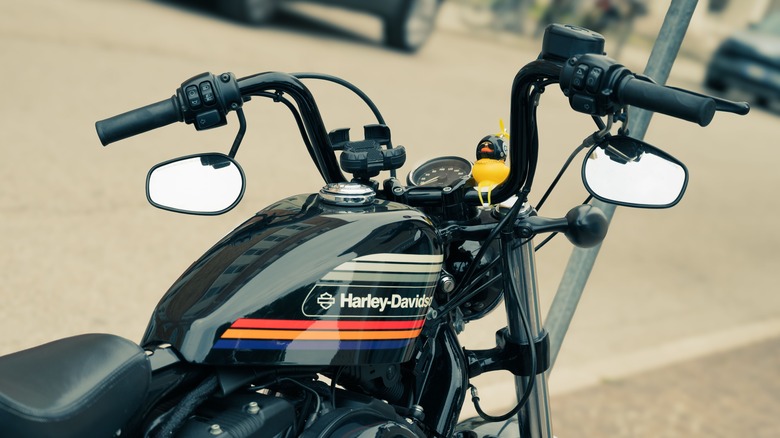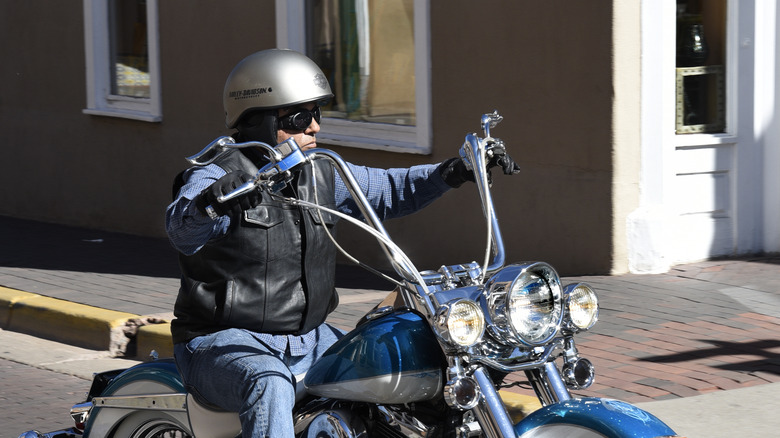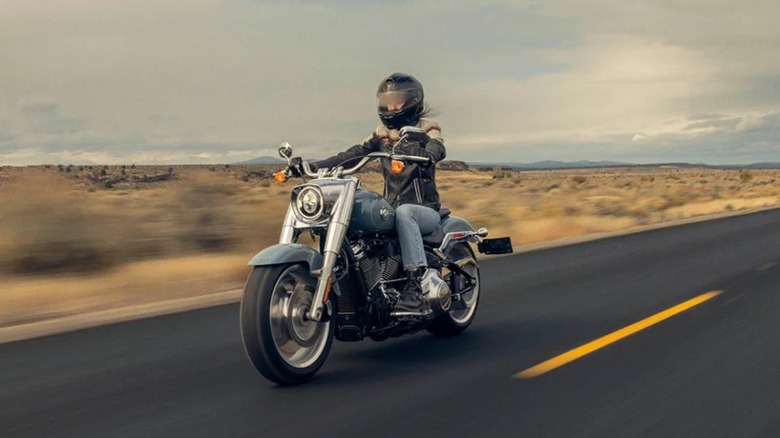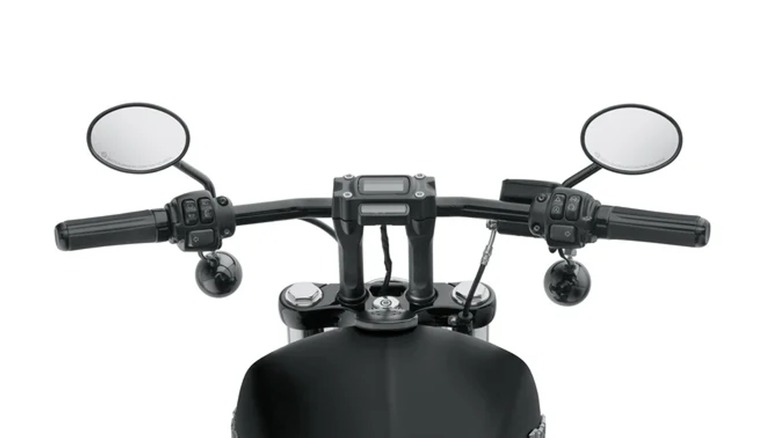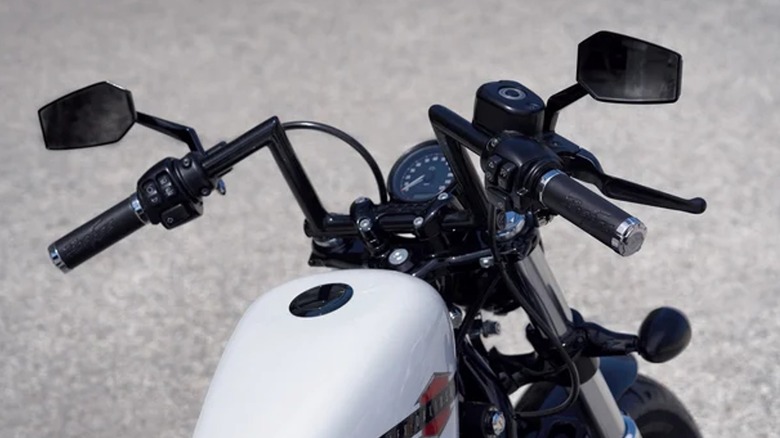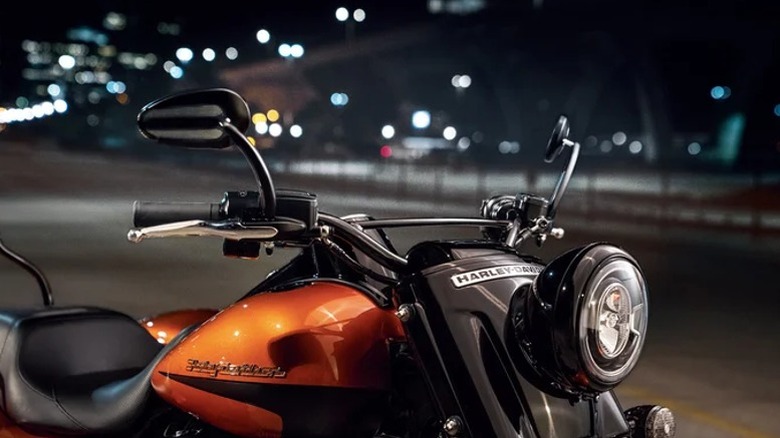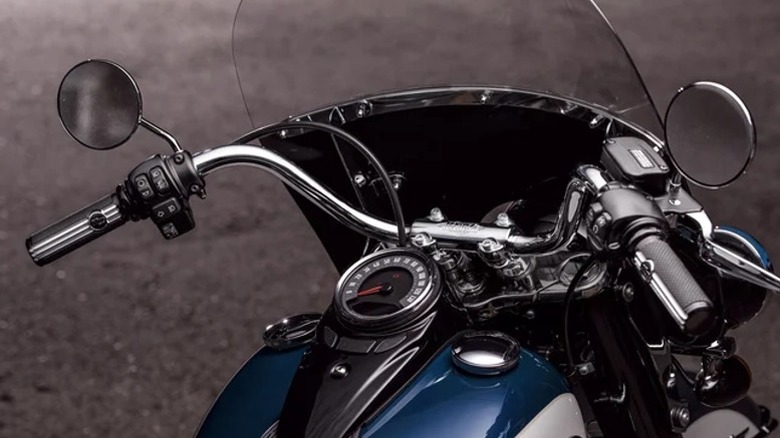Harley-Davidson Handlebars: Which Type Is Best For You?
There's something about the unique Harley-Davidson motorcycle designs that have captivated American riders for decades. The low, heavy frames with their loud, rumbling engines are symbols of power, toughness, and the freedom of the open road. But while many Harley enthusiasts may enjoy the simple pleasure of riding a stock design, there is a deep-rooted subculture that loves nothing more than custom modification. There's something cathartic about taking a beloved design and then transforming it to make it truly your own. There are various levels of modification, but replacing the handlebars is one of the cheapest ways to transform the look and feel of your Harley-Davidson motorcycle.
There are six different types of motorcycle handlebars commonly used on Harleys: Ape/tallboys, trackers, drags, z-bars, beaches, and reaches. Each these has a different look and offers a different kind of control over how you ride. Some of them may even be better suited to different Harley-Davidson frame types. Of course, you'll probably want to know a bit more about what distinguishes each of these handlebar types and what kind of riding they are best suited to before you invest a bunch of time and money swapping out your OEM bars. That way you can be sure that the type you choose is the one best suited to your individual needs.
Ape and tallboy handlebars
Apes and tall boys are what a lot of people picture when they think about classic choppers. As the names imply, these handlebars are taller and have a wider stance than other types. This places the rider's arms up and out, well above the bike's gas tank.
Taller riders or those with longer arms may also appreciate that apes and tallboys allow them to sit in a more upright and relaxed seated position since they won't need to lean as far forward in order to reach them. The fact that apes and tallboys are longer also means that they give the rider additional leverage while turning, meaning less pressure on your hands.One of the reasons you might want these kinds of bars is for the way they make you look while riding — as if you were hanging from the grips with your arms outstretched.
The biggest downside to these handlebars is that many of them place your arms above your heart, so gravity will no longer carry blood flow to your upper extremities. Some riders may experience numbness or tingling from this during longer rides. You also may need to get extensions for the clutch and brake cables if they don't have enough slack for the added weight.
Tracker handlebars
Next up we have tracker handlebars. Many motorcycles come stock with this style of handlebar pre-installed. They were modeled after bars initially designed for flat-track racing motorcycles, and they're fairly similar to what you might expect on most modern dirt bikes. They're shorter and narrower than apes and tallboys, but have a mild curvature that makes them taller and wider than drag handlebars (which we'll get to in just a moment.) This makes them a sort of compromise between the two that splits the difference in their respective structural strengths and weaknesses.
You get some of the added leverage and some of the more upright positioning that you would associate with apes without either being quite as dramatic. This adds a degree of both comfort and control while keeping your arms a bit lower, so you don't have to worry so much about numbness on longer rides. These bars are also good if you are taller or have longer arms, but they definitely place the rider in a significantly more aggressive posture.
Overall, tracker handlebars are a versatile selection that will keep you in a very neutral position. They're a comfortable solution that's good for beginners and riders who appreciate all-around utility over specialized performance or aesthetics.
Drag handlebars
Drag bars are pretty straightforward, pun intended. These handlebars are fairly wide, have the least curvature out of the lot, and usually don't have any rise. This means that they are barely elevated above the bike's dash. It gives them a minimalist appearance that is often found on Cafe Racers and sometimes on Bobbers. It might not be as flashy as the apes, but there is a sleekness to drag bars that's hard to compete with.
Having the bars mounted so low places the rider in an aggressively forward-leaning position. This positioning means that drag handlebars are extremely maneuverable. Riders tend to keep their elbows extended and their center of gravity lower while using drags which makes it easier to lean through tighter turns Many riders also like that they don't cause much wind resistance since they keep the rider's arms down low, behind the bike.
You might be interested in these if you prefer a more aggressive riding style and precise control while cornering. This is particularly nice if you enjoy taking shorter rides on winding roads. They're great for coast and canyon rides, but less ideal for long hours touring on the highway. Ride on them for too long, however, and both your shoulders and lower back might have something to say about it.
Z-bars
Most of the different kinds of handlebars are distinguished by the location and degree of their curvature or how high they come off the dash. Z-bars (also known as fused and chizeled handlebars) are defined a little differently. They're the only style of handlebars commonly used on Harley motorcycles which have curves made up of hard 90-degree angles. This gives them a striking appearance that adds an element of flair to any bike you might want to put them on.
Not all Z-bars ride the same, however. They come in several different heights. Some of them are moderately low, like trackers, while others match tallboys with how high they come off the dash. Z-bars are defined by the severity of their angles and not by the distance of the poles between those angles. This means that different Z-bars can offer different riding styles, so you'll have to decide what kind of positioning you prefer and make sure the ones you're looking at match your desired height before purchasing a set.
Z-bars are popular choices for Choppers and Cruisers. They don't offer any real benefit or detriment in terms of performance when compared to round-angled counterparts with similar heights, so installing them is more a matter of aesthetic preference than anything else.
Beach handlebars
Some riders just want something relaxed and easy to work with. That's where beach handlebars come into play. These are low, like drag bars, but they curve back toward the rider while also spreading wide. This allows you to keep your arms low and to the outside without needing to lean as far forward, taking stress off your shoulders and lower back while allowing your arms to remain in a more neutral posture. This is a fairly ergonomic setup that emphasizes comfort over performance, making it an excellent option for casual weekend rides. That said, some riders may find these bars to be a little too wide for comfort and may prefer something that offers them a little more control.
In terms of style, beach bars add a retro element to the design of whatever bike you decide to use them on. This makes them a particularly great option for those who enjoy renovating older Harley-Davidson motorcycles they bought used or those who have Harleys more suited to city cruising.
Reach handlebars
Finally, we have the last item on our list: reach handlebars. One problem that a lot of shorter riders might encounter is that standard-sized handlebar designs are designed to keep longer arms fully extended. This means that they're either out of reach or require you to lean so far forward that riding becomes uncomfortable. Reach bars are similar to tracker bars in that they curve slightly up from the dash near the base. The main difference is that they are designed to also come up and out toward the rider a bit more, putting the grips and controls closer to the saddle. This makes them a great option for shorter riders who have had a difficult time achieving an upright posture with other types of handlebars.
Harley-Davidson sells a lot of different kinds of reach handlebars. Some of them come out further while others, might be wider, taller, or come back at a sharper angle. This gives riders plenty of options for handlebars that bring the grips into easy reach while still providing options for their preferred style of ergonomics.
